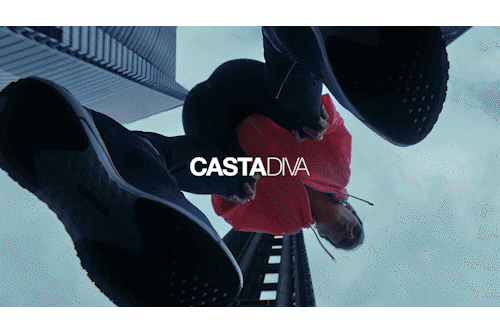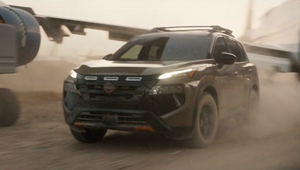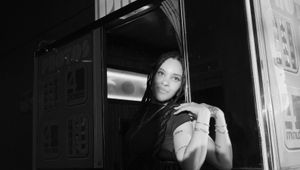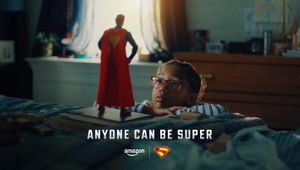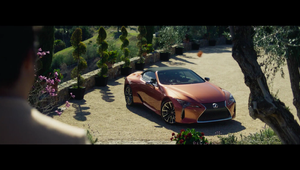
"Make Them Want to Hit Replay:” Scott Perry’s Directorial Philosophy

From starting an online music blog during the format’s heyday, to collaborating with artists who went on to become global stars – Scott Perry’s finger has always been on the pulse.
He was raised in Park Slope, Brooklyn, and moved to the suburbs of Connecticut when he was around six or seven, but New York’s influence was permanent.
“My life always orbited around New York. Every concert, every school trip, every big moment – all took place in the city,” he says. “That constant exposure to New York energy really imprinted something on me. I didn’t know what I wanted to do yet, but I knew I wanted to be around that.”
As a high schooler, Scott continued to learn from the city that had inspired him. First, by consuming all genres of film at his part-time job at a video store, “just burning DVDs and watching everything.” In college, he found his “first love” – music – tapping into New York’s thriving rap scene and launching a blog “during the peak blog era,” he says. “I learned Photoshop, taught myself how to code and built the site from scratch.”
“Eventually I got a Canon 7D and started teaching myself how to shoot and edit. I’d take a bus from Boston to NYC to shoot rap shows, then edit the videos on the ride back. I started interviewing rappers for my blog, filming concert recaps, and making mini-documentaries.”
Scott’s evolution from words to video content creation eventually gained traction that led to roles with XM Radio and MTV in Times Square. “But I hated it,” he says, “I was posting on my blog all day and leaving to shoot shows at night. That double life eventually just became my full-time thing. The blog launched my career.”
Scott landed at what he describes as his “dream place to work” – music and lifestyle magazine THE FADER – where he was tasked with launching its video department under the guidance of his former boss Rob Semmer
“By 29, I was head of the video department, managing a team of ten. We were doing everything from artist interviews and branded doc-style content to full-scale commercial work. It was a crash course in leadership, creativity, and production all at once.”
The role was a unique and formative blend of production leadership and creative strategy. Half of Scott’s time was spent directing in-house editorial work and managing a creative team, whilst the other half was spent working as an agency creative director, representing THE FADER’s in-house agency, Cornerstone.
“That job was equal parts creative and strategic,” he explains, “On one side, I was leading the editorial video voice of the brand. Directing and shaping content that felt aligned with FADER’s cultural credibility. On the other, I was collaborating with clients as their creative partner, finding directors, and guiding projects from the ground up.
“[I was] pitching ideas to brands like Toyota, Jack Daniel’s, New Balance. Once we were awarded the project, I’d work with production companies like Somesuch, Park Pictures or Iconoclast to help bring these films to life.”
This experience equipped Scott with an invaluable skillset: the ability to “speak both languages” and understand the wants and needs of both clients and creatives. “That kind of dual exposure to both the creative process and the brand side completely shaped how I collaborate now as a director,” he adds.
That perspective has since led Scott to sign with JOJX for commercial representation – a move he says “just made sense.”
“Sevi [Buford, partner and EP], Joe [Care, EP], and Jackson [Morton, partner and EP] are legit,” he says. “They’ve built something special – taste-driven, director-focused, and creatively ambitious. I wanted to be surrounded by people I could learn from, people who challenge me. You grow by pushing yourself in rooms full of people better than you. That’s why JOJX made sense. They’re that room.”
Whilst at THE FADER, Scott learned the production ecosystem – from directors to producers and editors – inside-out. His biggest takeaway was how to spot and champion creative talent – it’s a learning he’s taken into directing. “I also saw how rare and valuable it is to have producers and creatives who truly protect the vision. So now that I’m on the directing side full-time, I try to be that person who holds the line when it matters, but also knows when to collaborate and adjust,” he explains
On set, this depth of understanding really comes into play. Scott has worked with major brands such as Nike, Google, Amazon, The New York Times and McDonald’s, and notes that a common thread that ties these projects together is “empathy.”
“You need to understand your crew, your client, your talent,” he says “Everyone’s got different pressures and motivations. If you can tune into those, you’re better equipped to find solutions that work for everyone. On set, what makes things flow isn’t just talent. It’s collaboration, mutual respect, and a shared belief in the work. Great things happen when people feel ownership and safety.”
That emphasis on safety extends to the people on camera – whether it’s a global star or a subject in a documentary – style spot. Scott first developed this sensitivity at THE FADER, often working with artists before they hit mainstream fame. “A lot of the artists I worked with came to us before they blew up. The FADER was often their first big exposure. So we were helping shape their public image before they had teams of stylists and consultants,” says Scott, as he reflects on working with the likes of Burna Boy, Dua Lipa and Lil Nas X.
“The biggest thing is trust. You build that by listening more than you talk,” he adds. “These artists might be new to being on camera, or wary of being packaged. So I always tried to make the shoots feel safe, low-pressure, and intentional. Whether it’s a global artist or a real person in a doc-style ad, it’s about creating a space where they feel seen.”
This has all contributed to Scott’s overarching approach to directing. “I’m an observational storyteller”, he says. “Even in polished, big-budget spots, I want it to feel like there’s a real person on the other side of the lens. My doc background taught me how to read people, find the moment, and build trust fast.
“I’m drawn to moments that feel human. That doesn’t mean everything has to be handheld or gritty, but it needs to feel honest. That translates whether I’m working with actors, athletes, or everyday people. I want to find that emotional entry point for the viewer. That’s what sticks. Lately, I’ve been moving into more cinematic, dialogue-driven work. But that doc DNA is always there. It’s my anchor.”
All of this boils down to a longstanding love for making. From his early blogging days to working with global brands, Scott still evaluates his work by the same metric he used at THE FADER: “Every video was something I wanted my friends to watch. That’s still how I measure the work.”
Stepping into the commercial scene was a natural evolution for Scott that tied together his love for the craft, knowledge of production and passion for storytelling.
“I’ve always been obsessed with trailers,” he says. “I used to watch Apple trailers every morning before school. And commercials, when done right, are like trailers for ideas. You’ve got 30 seconds to hook someone emotionally, to make something stick. That’s a creative challenge I love. I’d spent a decade in music and editorial. By 31, I was ready to pivot into something that I was already doing, just on a bigger scale.
“Commercials were the logical next step. And I like solving problems. I genuinely enjoy figuring out how to make something hit within the constraints.”
That mindset underpins his entire approach to directing. “I’m fascinated by how much story, tone, and emotion you can squeeze into under two minutes. That’s the root of my whole commercial philosophy. Make them want to hit replay.”






